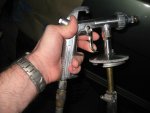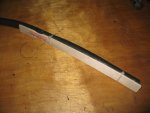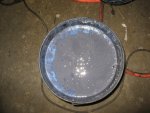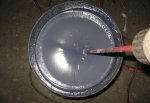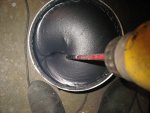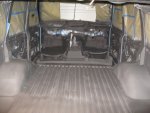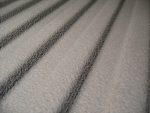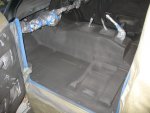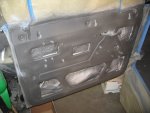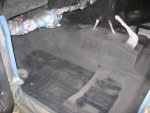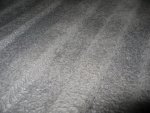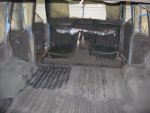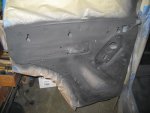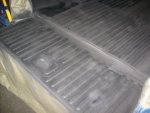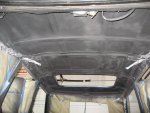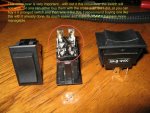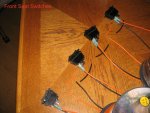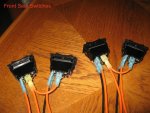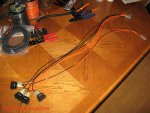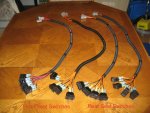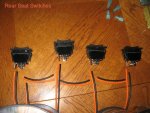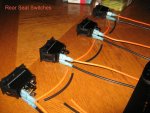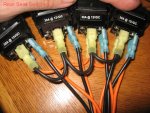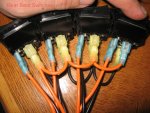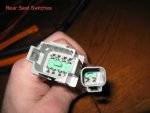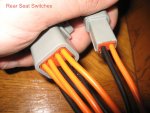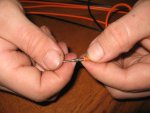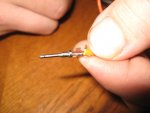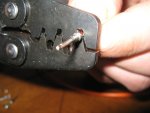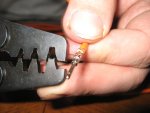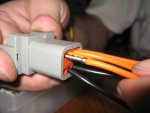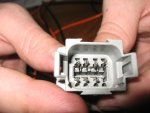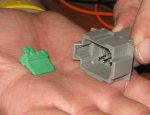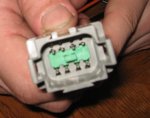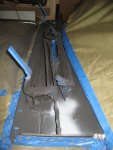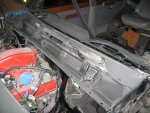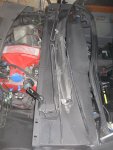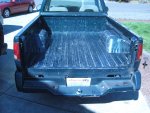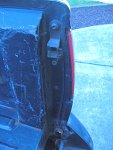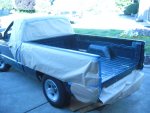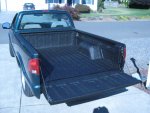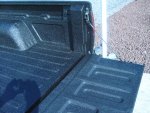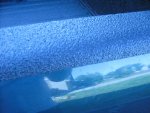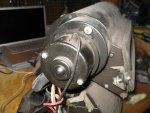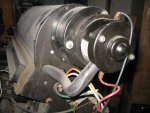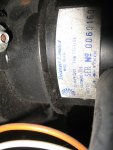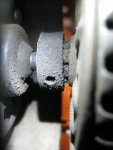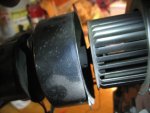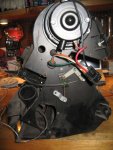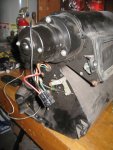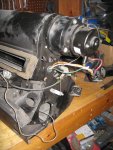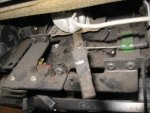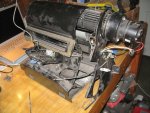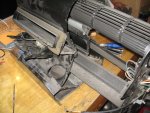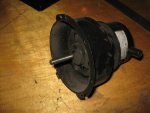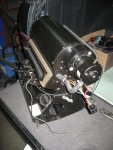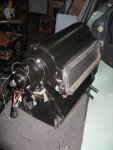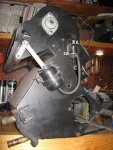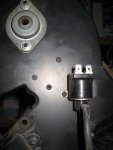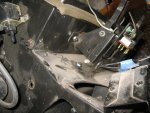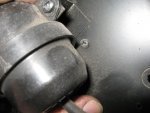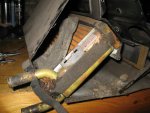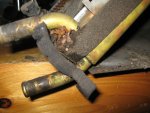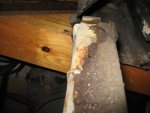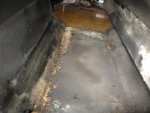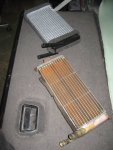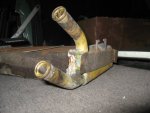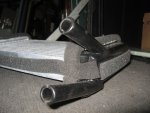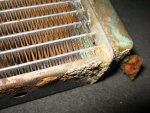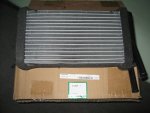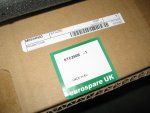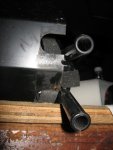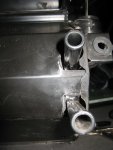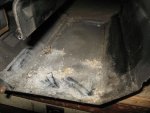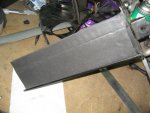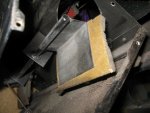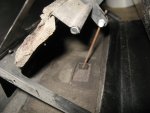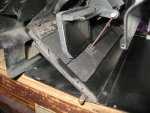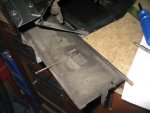rrclassicbt550
Farmer Jon
First coat of LizardSkin is on and drying...
The first coat of LizardSkin is on and drying now. It is pretty cold here right now so the between coat time seems to take quite awhile. Thankfully this stuff seems to be very very forgiving. Its really easy to spray on but there is one main difference between the techniques I am used to and the techniques for spraying this. With paints I spray one way then let off the trigger, then spray the other way and then let off the trigger. With LizardSkin and the gun I purchased from them for spraying it, the technique that works best for me is to just stay on the the trigger the whole time and don't let off.
The set up I am running is a hose from the bucket straight to the gun, and if I let of the trigger, the LizardSkin will just flow back down the hose into the bucket; it then takes around 30 seconds with the trigger all the way down for it to suck it back up to the gun. Initially I tried running a 8ft hose from the bucket to the gun, but it never was able to get the LizardSkin from the bucket to the gun. However, it worked really well when i cut the hose down to 4ft.
I definitely recommend the hose into the bucket set up if you are going to do as large of an area as I am doing. It can be kind of cumbersome with the bucket sometimes but the 4ft length of hose allows more movement and range of motion then you might think. Please trust me on the fact that pouring this stuff into the spray guns small pot will get old really fast. There are more positives from the set up that has the spray gun pulling straight from the bucket than their are negatives.
Other things to note:
Multiple coats will have to be done. There is no real way around it. I laid my first coat on really heavy and I am going to have to do one maybe even two more coats until i have reached there recommended depth of material. I am glad this stuff is so easy to work with because its a big job to do this much area.
Its not harmful so I can spray it in the garage with out worrying about the HVAC system sucking toxic fumes into the house. They did recommend I use a dust mask though. So no huge bulky respirator is necessary (although I did use my respirator because I don't keep dust masks around anymore...they are getting so expensive these days).
The clean up couldn't be easier. Its a water based product so I literally just got a paper towel damp/wet and wiped any overspray off. If you choose to use this stuff don't wait too long before wiping up the overspray. I finished up spraying, cleaned my equipment, and then came out to start cleaning up the overspray about 8-10 minutes later, even though the overspray was still easy to clean off, it did start drying up a little bit. In warmer temperatures it might be a good idea to put the spray gun and hose into a bucket of water to soak for a bit while cleaning up overspray. The water won't hurt the gun because water is used to clean the gun at the end of the job. I would try to keep the water out of the airline fitting though.
If you have any questions please feel free to ask.
Have a good one.
Jon
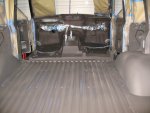

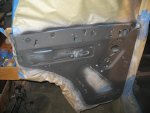
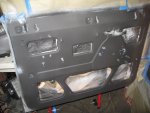
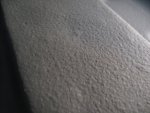
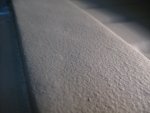
The first coat of LizardSkin is on and drying now. It is pretty cold here right now so the between coat time seems to take quite awhile. Thankfully this stuff seems to be very very forgiving. Its really easy to spray on but there is one main difference between the techniques I am used to and the techniques for spraying this. With paints I spray one way then let off the trigger, then spray the other way and then let off the trigger. With LizardSkin and the gun I purchased from them for spraying it, the technique that works best for me is to just stay on the the trigger the whole time and don't let off.
The set up I am running is a hose from the bucket straight to the gun, and if I let of the trigger, the LizardSkin will just flow back down the hose into the bucket; it then takes around 30 seconds with the trigger all the way down for it to suck it back up to the gun. Initially I tried running a 8ft hose from the bucket to the gun, but it never was able to get the LizardSkin from the bucket to the gun. However, it worked really well when i cut the hose down to 4ft.
I definitely recommend the hose into the bucket set up if you are going to do as large of an area as I am doing. It can be kind of cumbersome with the bucket sometimes but the 4ft length of hose allows more movement and range of motion then you might think. Please trust me on the fact that pouring this stuff into the spray guns small pot will get old really fast. There are more positives from the set up that has the spray gun pulling straight from the bucket than their are negatives.
Other things to note:
Multiple coats will have to be done. There is no real way around it. I laid my first coat on really heavy and I am going to have to do one maybe even two more coats until i have reached there recommended depth of material. I am glad this stuff is so easy to work with because its a big job to do this much area.
Its not harmful so I can spray it in the garage with out worrying about the HVAC system sucking toxic fumes into the house. They did recommend I use a dust mask though. So no huge bulky respirator is necessary (although I did use my respirator because I don't keep dust masks around anymore...they are getting so expensive these days).
The clean up couldn't be easier. Its a water based product so I literally just got a paper towel damp/wet and wiped any overspray off. If you choose to use this stuff don't wait too long before wiping up the overspray. I finished up spraying, cleaned my equipment, and then came out to start cleaning up the overspray about 8-10 minutes later, even though the overspray was still easy to clean off, it did start drying up a little bit. In warmer temperatures it might be a good idea to put the spray gun and hose into a bucket of water to soak for a bit while cleaning up overspray. The water won't hurt the gun because water is used to clean the gun at the end of the job. I would try to keep the water out of the airline fitting though.
If you have any questions please feel free to ask.
Have a good one.
Jon







